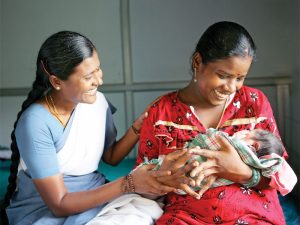Poshan 2.0:

The Ministry for Women and Child Development inaugurated Poshan 2.0 and urged all Aspirational Districts to establish a Poshan Vatika (nutrition garden) during the Nutrition Month (Poshan Mah) from 1st September.
- A month-long celebration of the POSHAN Abhiyan mission places special attention on Severe Acute Malnourished (SAM) children.
- It is an umbrella scheme covering the Integrated Child Development Services (ICDS) (Anganwadi Services, Poshan Abhiyan, Scheme For Adolescent Girls, National Creche Scheme).
- It was announced in Union Budget 2021-22 by merging supplementary nutrition programmes and the POSHAN Abhiyaan.
- It was launched to strengthen nutritional content, delivery, outreach and outcome, with renewed focus on developing practices that nurture health, wellness and immunity to disease and malnutrition in the country.
Poshan Maah:
- Month of September is celebrated as POSHAN Maah since 2018 to improve nutritional outcomes for children, adolescent girls, pregnant women, and lactating mothers.
- It includes a month-long activities focussed on antenatal care, optimal breastfeeding, Anaemia, growth monitoring, girls education, diet, right age of marriage, hygiene and sanitation and eating healthy (Food Fortification).
- The activities focus on Social and Behavioural Change Communication (SBCC) and are based on Jan Andolan Guidelines.
- SBCC is the strategic use of communication approaches to promote changes in knowledge, attitudes, norms, beliefs and behaviours.
Poshan Vatika:
- It’s main objective is to ensure supply of nutrition through organically home grown vegetables and fruits simultaneously ensuring that the soil must also remain healthy.
- Plantation drives for Poshan Vatikas would be taken up by all the stakeholders in the space available at anganwadis, school premises and gram panchayats.
POSHAN Abhiyaan:
- Also called National Nutrition Mission, was launched by the government on the occasion of the International Women’s Day on 8th March, 2018.
- The Abhiyaan targets to reduce Stunting, undernutrition, Anemia (among young children, women and adolescent girls) and reduce low birth weight by 2%, 2%, 3% and 2% per annum respectively.
- It also targets to bring down stunting among children in the age group 0-6 years from 38.4% to 25% by 2022.




